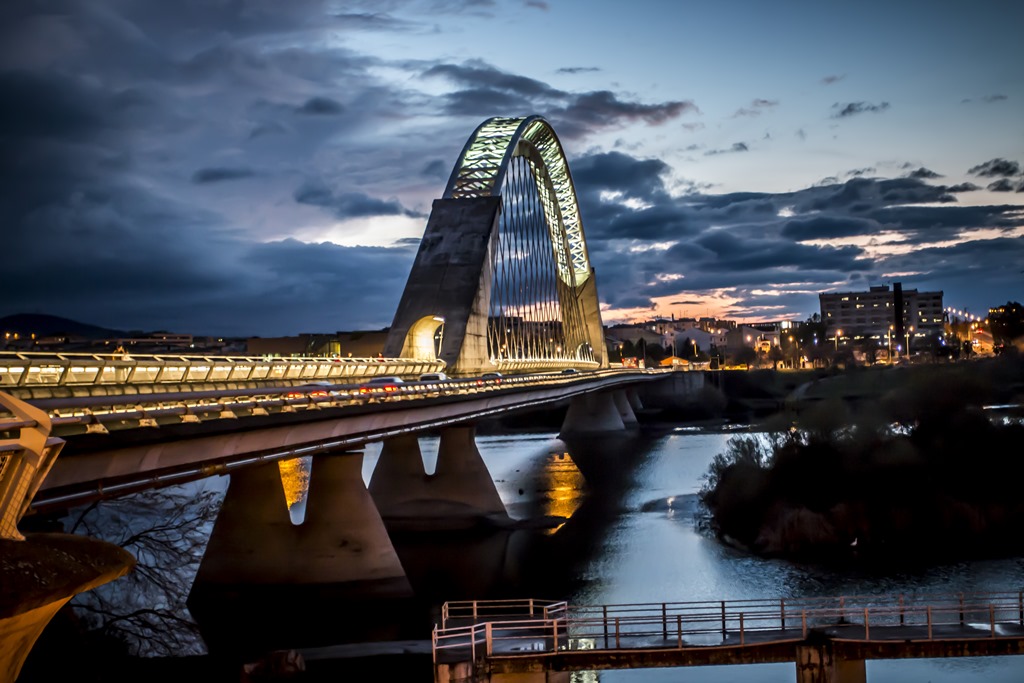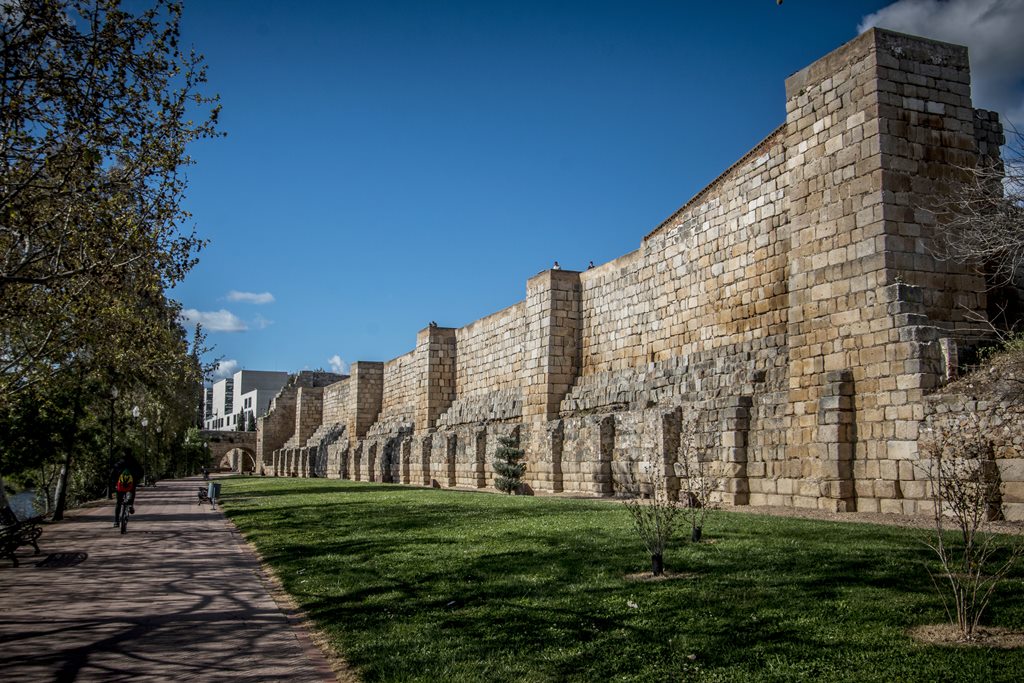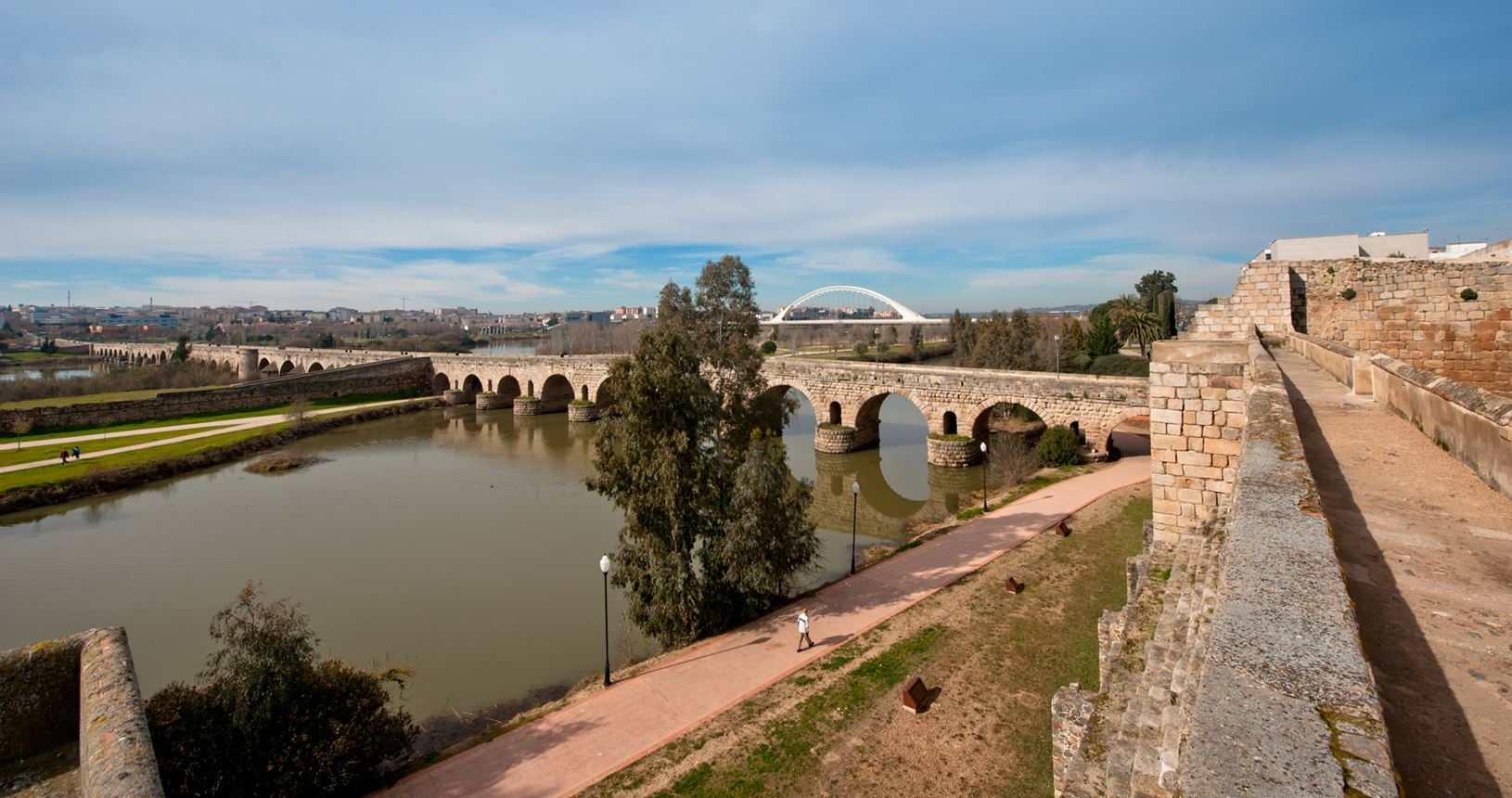The city of Emerita Augusta was founded by order of the Emperor Caesar Augustus in the year 25 BC to house the soldiers of the Cantabrian Wars, veterans of the V Alaudae and X Gemina Legions.
From the beginning, it was a walled city in which buildings for public entertainment were of special interest (Theatre, Amphitheatre, and Circus), in addition to the Forums, temples, baths, reservoirs, and other buildings that were included in the city, as well as buildings for housing and public squares. Especially relevant was the Roman Bridge over the Guadiana, one of the longest in the Empire, which became an important communications hub, something that is consistent with the importance of the city. With the arrival of the Visigoths, the city continued to maintain its importance and it was not until after the presence of the Arabs that it began to decline, being almost ostracized until the twentieth century. Since 1993, Mérida has regained its greatness as, in December of that year, it was declared a World Heritage Site by UNESCO. Thus, the city's touristic merit has been recognized, and tourism is one of its economic drivers.
In recent years, Mérida has once again become the political, economic, administrative, and cultural center that it once was in other eras. It has been the Capital of the Autonomous Community of Extremadura since 1983. With a registered population of almost 60,000 inhabitants, it is a growing city where visitors can discover its historical legacy while at the same time enjoying its customs, gastronomy, nature, and cultural offerings.
Mérida is today, first and foremost, an administrative city which welcomes into its bosom the remains of a complex network of cities that have overlapped successively since the founding of the Colony of Emerita Augusta in the year 25 BC. There have been times, especially from the fourth to the sixth centuries, in which Merida was the head from which a new Hispania was conceived – one that was substantially Christian but that did not reject its glorious Pagan past. This difficult situation found comfort under the Visigothic monarchy, especially under the patronage of the archbishopric of Mérida, the most important of late antiquity and the early Middle Ages in the Peninsula, as twelve bishoprics depended thereon. Later, the new emirate, in order to survive, had to rely on large cities that already existed like Córdoba or even Mérida itself. Subsequently, the caliphate reduced the city’s influence in favor of a new one created by the people of Mérida themselves: Batalhús, currently Badajoz.

Lusitania Bridge

Moorish Alcazaba
After its conquest by the people of León in 1230, its archiepiscopal seat was not restored and it was left a mere head of a province linked to the Order of Santiago. With kings and nobles forced to go towards Portugal, the villa remained amongst the villages with secondary roles in the history of the new Kingdom of Spain. Those very roads that carried news and wealth also led to the disastrous consequences of cruel wars fought with Portugal and Napoleonic France. It was a new invention in the nineteenth century –the locomotive– which invited the city to dance once again in the concert of Spanish history.
Vestiges still remain of the ancient Colony: streets and roads, dikes, bridges, aqueducts, dams, homes, necropolises, forums with their temples and colossal buildings to hold theatrical and circus games. The National Museum of Roman Art teaches us about the evolution of that great city of ancient times.
Of the city's early Christian and Visigothic past, dedicated to God and the Patron Saint Eulalia, there still remain hundreds of decorative pieces (present in the Visigothic Collection at the Convent of Saint Clare), along with many noteworthy ruins, amongst which are those of the ancient Basilica of the “Martyrdom” and the hospital of the Archbishop Mausona. Likewise, the unique Alcazaba Military Complex is one of the jewels of the dawn of Muslim presence in the Peninsula. The Reconquest does not reconcile the city with its past, although there are outstanding expressions of the Romanesque, Gothic, and –especially– Baroque. Today, the city is without complexes, leaving behind buildings of unique architectural style whose creators have cast their prestigious surnames to the new heritage that, for future generations, will leave its mark on the Mérida of the twentieth century.






